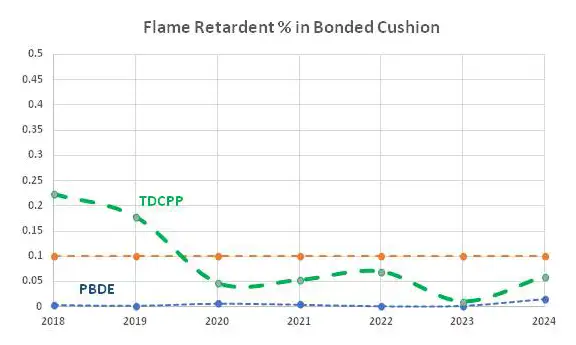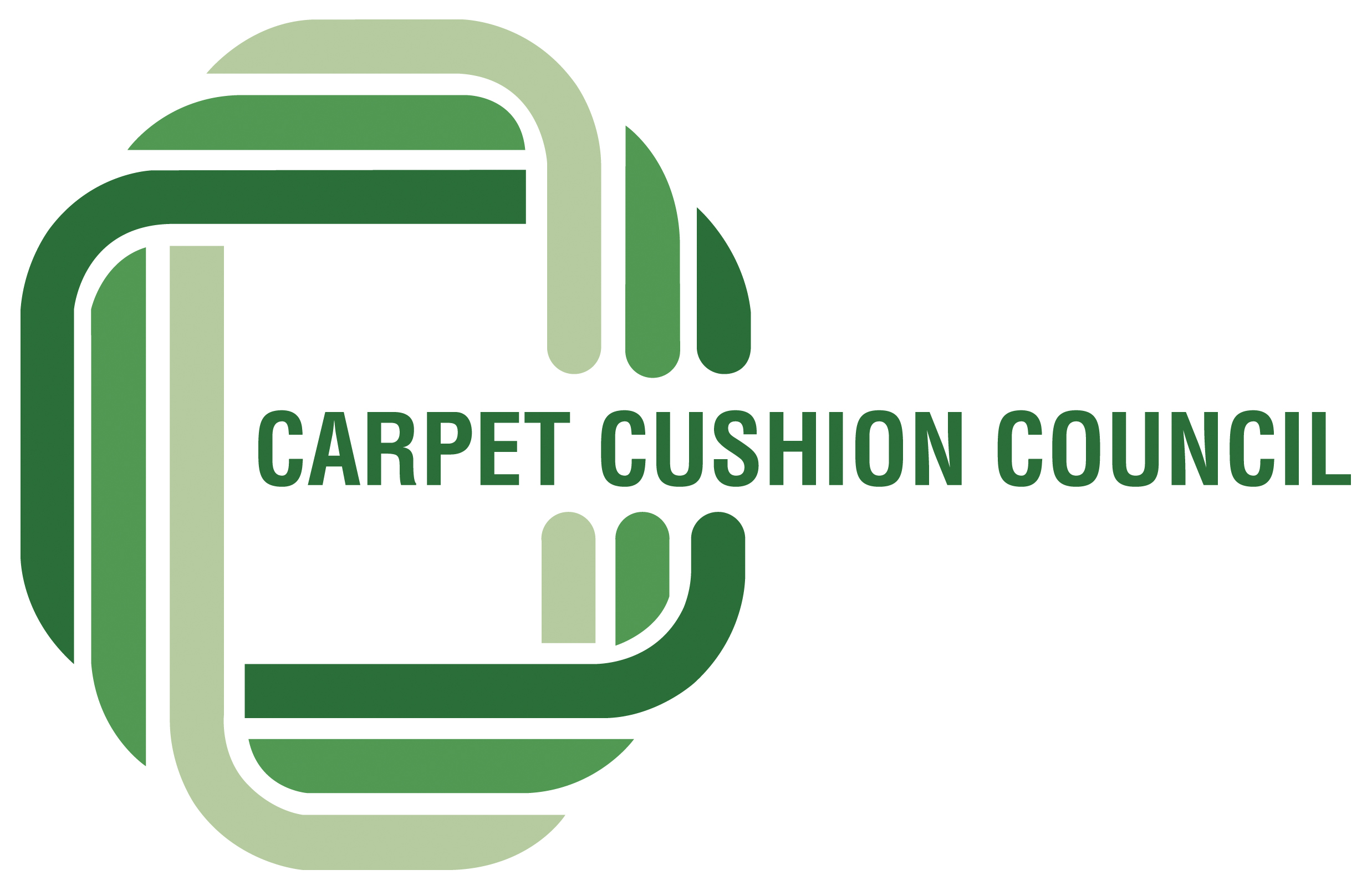Bonded Carpet Cushion and Flame Retardants
Bonded Foam Carpet Cushion is manufactured using 100% recycled flexible polyurethane foam (FPF). It represents over 85% of the total cushion sold in the United States.
Post-industrial and post-consumer foam remnants are used in its manufacture.
For many years State and Federal regulations have required that FPF used for Furniture, Bedding and Transportation meet flammability regulations.
Flame retardants (FRs) are NEVER added to bonded carpet cushion. However, trace amounts of FRs can be detected in bonded cushion due to their presence in the recycled FPF scrap used to make the product.
There are several flammability tests such as California TB 117 for furniture and the Federal test MVSS 302 for automotive components. Other tests exist for bedding, mass transportation, military and institutional mattresses.
Penta Bromo Diphenyl Ether (PBDE)
Since the 1960's PBDE was a common FR additive. In 2005 the US FPF industry voluntarily ceased using PBDE in its products. Foam produced in the pre-2005 era was eventually recycled into bonded cushion, hence small amounts of PBDE began to be found in new bonded cushion.
The Carpet Cushion Council (CCC) began an independent bonded cushion FR testing program beginning in 2006. Since the use of PBDE ceased, measured levels of PBDE have dramatically declined.
Tris Dichloro Propyl Phosphate (TDCPP)
Following the phase-out of PBDE, TDCPP became an FR of preference to meet product flammability standards. To achieve equivalent flammability resistance, higher usage levels were needed compared to PBDE.
In 2013 California modified TB 117. Furniture manufacturers could now meet the new flammability standard, TB 117-2013, without the addition of FRs. However, strict flammability test compliance still exists for automotive foam, which results in the continued use of FRs.
The CCC began monitoring TDCPP levels in new bonded cushion in 2014. Since then the concentration has declined significantly, as did PBDE.
The CCC monitors total FR additive content in bonded foam cushion on an annual basis.
Keeping an estimated 1+ billion pounds per year of FPF scrap out of landfills by using it to manufacture bonded carpet cushion is a remarkable recycling success story.
The CCC is an industry leader in projects associated with reduced VOC emissions such as the Green Label Plus Indoor Air Quality program for carpet cushion and stresses product stewardship on behalf of its members.

September 2023
